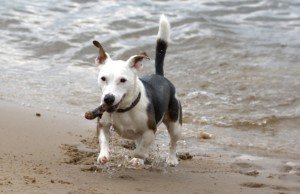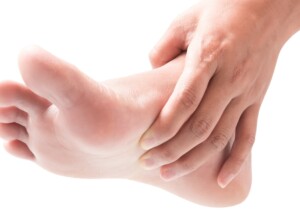
A veterinarian explains the five most likely injuries that a small dog can suffer when it’s exercised too hard.
Small dogs need exercise as much as large breeds do, but this doesn’t mean that little dogs are more invulnerable to exercise-related injuries just because they have short legs and are closer to the ground.
The five most common injuries that a small dog is likely to experience, from being over-exercised, are as follows, says Dr. Jules Benson, BVSc, chief veterinary officer with NationwideDVM, a pet insurer company.
Injury #1. Patellar luxation
Perhaps the most common orthopedic injury in small and toy breed dogs that is seen by pet insurance companies is the medial patellar luxation, says Dr. Benson.
The patella is the kneecap. A congenital structural abnormality can cause the kneecap to slide sideways out of its groove, continues Dr. Benson. This can cause lameness.
“While exercise doesn’t usually make the condition worse, it’s often more noticeable when pets exert themselves; affected pets may hold a hind leg up suddenly, hop for a few steps, then often go back to normal,” explains Dr. Benson.
If this injury situation goes untreated, it will get worse, causing arthritic changes and pain in the knee, which can then necessitate surgical repair.
Injury #2. Heat stroke
A little dog exercising in the hot sun needs lots of water. Heat stroke can be life-threatening.
“A dog’s normal temperature usually peaks at around 102.5oF, but when it rises to 105-110oF, this can lead to coma, organ dysfunction and even permanent brain damage or death,” explains Dr. Benson.

Watch out for subtle but suspicious signs: restlessness, incoordination or a drunken-like movement, excessive panting or drooling.
Injury #3. Lameness
Too much exercise can cause a small dog to lose its vigor and become listless.
“Sometimes, dogs can come up lame even when there’s no visible reason,” says Dr. Benson.
“Your veterinarian may recommend radiographs (x-rays) to ensure that no bones are broken and, if all looks normal, will likely recommend limiting your dog’s movement and perhaps a course of pain-relieving medication.”
Injury #4. Broken nails
It’s not uncommon for a small dog that’s exercised a lot to get broken nails, even on soft ground.
“The end of a broken nail often needs to be removed by a veterinarian, and the biggest risk after this comes from infection of the exposed soft tissue inside the nail,” explains Dr. Benson.
The little dog with the broken nail will often need to wear an Elizabethan collar to prevent it from chewing or licking the nail area, which will need to be kept clean.
Keeping nails trimmed can help prevent breaking, but if the problem recurs, there may be an underlying condition that a veterinarian can treat.
Injury #5. Lacerations/cuts
“If we ran around in our bare feet all the time, we’d likely wind up with some cuts on our feet – the same way our dogs do,” says Dr. Benson.
Particularly in colder weather, too much wear and tear on paws can lead to cuts, abrasions or irritation, continues Dr. Benson.










































